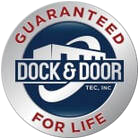|
We asked this question of hiring leaders to better understand the challenges our clients face when maintaining top-notch talent in their operations. Here’s what they shared:
In summary, employees working in a facility with loading docks and doors are looking for a safe, comfortable, and supportive work environment that values their contributions and provides opportunities for growth and development.
Best of luck to you and your team! As we head into the fall and eventually winter, we start to focus on keeping warm. Keeping the cold air from blowing through our doors. Keeping the temperature in that sweet spot of not too hot and not too cold. But what about water? Not just from fall rainstorms but from melting snow and ice.
We know. It’s September. Are we really talking about snow and ice? Yep. We are. Winter in the Midwest is hard. It can be brutal on your loading dock equipment and bottom line. It’s cold. It’s warm(ish). It’s sunny. It’s snowing. All of that can cause chaos with your loading dock equipment. Melting (and then refreezing) snow and ice pose serious safety concerns and performance problems at your loading docks. Safety Concerns Slippery docks are dangerous to your employees and visiting drivers alike. The potential for someone to slip and fall greatly increases if your docks are not properly sealed and water or ice is present. Forklifts going in and out of trailers will transfer water throughout your facility, creating even more chances for someone to slip and fall. This can lead to injuries, time off, workers comp – all of these can be avoided by paying closer attention to your loading dock and the potential for water infiltration. Compliance Concerns Ever smelled a stagnant swamp or bucket of water? Standing water can become a breeding ground for harmful bacteria. Bacteria poses numerous threats to the health of your staff and food facilities can be a major violation of the FDA Food Safety Modernization Act (FSMA) requirements. FSMA requires you to have a food safety plan in place that includes an analysis of hazards and risk-based preventive controls to minimize or prevent the identified hazards. A pest infestation can be another violation, especially in food and pharma facilities. Any gaps in your seals or equipment can lead to issues with requirements and compliance. Performance Problems Have you ever tried to pry something off the ground that good ole’ Mr. Winter has frozen? Say your garbage can after it’s been sitting for a week with constant thaw and freeze. Not a whole lot of fun and sometimes an unsuccessful venture. Now imagine that at your loading docks. Imagine melted ice and snow working its way down into your metal loading docks and thawing and refreezing. Over and over again. Many repairs we perform during the winter could be prevented by properly maintained and sealed equipment. A nagging or small issue in July can become a big problem in December So, what should I do?
Check out our other blogs on facility modernization and safety for more ideas on how to improve your facility and your bottom line. As always, we hope you find this information useful and you find something that you can do in your facility to help prevent the winter blues. Please contact us with any questions or concerns. How many times have we all not done something the way it should be done simply because we are too tired? Or cut corners to shave a little bit of time off a project because it’s been so intense to work on? How many near misses with errors or injuries have we all had because we are unable to focus or have turtle speed reaction times?
Employee fatigue can be expensive, decrease your companies’ productivity and ultimately your bottom line. Employers and employees are becoming increasingly aware that workplace fatigue can be a serious safety issue. Let’s dig into workplace fatigue a bit and see what we all can do to help combat this surprisingly common and often overlooked safety concern. What is fatigue? The dictionary defines fatigue as “extreme tiredness resulting from mental or physical exertion or illness”. Fatigue can be caused by a number of things, both work and personal. Physical stresses such as lifting heavy objects or operating machinery or tools for long periods of time can cause physical fatigue. Mental stresses such as prolonged periods of intense focus or long, difficult or spirited meetings can cause mental fatigue. Other factors such as long commutes, working overnight shifts, not having adequate rest during or after shifts, long hours, work environment conditions like dim lighting or noisy conditions, longer hours, can all play a role in workplace fatigue. Even having poor social interactions with your co-workers can cause fatigue. It’s not just about how much or how good of sleep you get. Effects of fatigue Fatigued people lack focus and fall behind on projects or simply don’t have the energy to pay attention to what is going on around them. Slower reaction times and decreased cognitive ability can have devastating safety consequences. Simply put – when people are fatigued they tend to make bad choices. In this article from the National Safety Council (NSC), Fatigue – You’re More Than Just Tired, there are some eye-opening facts on fatigue and what it does to our bodies, our productivity, our mental health, and overall wellness. Fatigued workers are also more apt to contract common illnesses and struggle with overcoming them. Since people suffering from fatigue are already experiencing physical effects from fatigue they are more susceptible to common illnesses and can’t fight them off as easily. That, in turn, leads to more sick days, less production time, and yep, more stress. It can be a vicious cycle. Who does fatigue affect? While fatigue affects everyone, night shift workers, drivers, healthcare, and construction workers are most a risk. According to this article published by OSHA our bodies operate on a circadian rhythm sleep/wake cycle. It is naturally programmed for sleeping during night hours. Demanding work schedules may disrupt the body’s natural cycle, leading to increased fatigue, stress and lack of concentration. Long work hours and extended and irregular shifts may lead to fatigue and to physical and mental stress. How does fatigue harm the workplace? Some of the most deadly catastrophes in the past 30 years have been caused in part by fatigue due to sleep deprivation. According to this article citing Dr. Denis Cronson; in the Exxon Valdez oil spill, employees had been working up to 14-hour shifts and a tired third mate had fallen asleep at the wheel, causing the second largest oil spill in American history. In the Chernobyl disaster, the power plant exploded after engineers had worked 13 hours or more, causing probably the worst nuclear disaster in history. In the Canadian National train disaster, two crewmen on one of the freight trains suffered from sleep apnoea that caused chronic sleeplessness and resultant fatigue and crashed into another train, spilling 3000 gallons of diesel and finally in the Air France disaster, the official report concluded that the pilot had had only had one hour of sleep the night before, and was taking a nap when the plane collided with a tropical storm, killing all 228 people on board. OK so those are extreme examples but they put into perspective what can happen with fatigued workers. And what can happen if employers don’t recognize and address fatigue in their employees? Here are some examples from Safety News Alert of how fatigue can harm our workplaces:
SO……what the heck do we do about it? Now that are you sufficiently bombarded with doom and gloom facts….let’s talk about how we can recognize, deal with, and help prevent fatigue in our workplace. We understand that you can’t control your employees once they are off the clock. You can’t tuck them into bed every night, but there are things you can do to help them understand how to deal with fatigue and how to let you know when they are getting to their breaking point.
We hope that we have given you some helpful information and actions that you can take to increase awareness of fatigue at your facility and with your employees and co-workers. As always, please Contact Us, if you have any questions about our products or services. We are here to help in any way that we can. Safety hazards exist in every workplace – from the smallest office to the biggest warehouse. Heavy machinery, distracted walking, water on the floor, heavy traffic areas, etc. Slips, trips, and falls are a major source of preventable injuries and deaths in the workplace; only motor vehicle incidents cause more worker fatalities. The loading dock area, in particular, is ripe with potential dangers. Since safety measures come in all shapes, sizes, and forms, what can you as an employer do to make your facility as safe as it can be for yourself, your employees, and visitors? Let’s look at each situation and how you can help prevent injury and equipment damage. Slips
Things like water on your dock from a leaky dock seal or rain shelter is an easy opportunity for someone to slip and end up in one of the situations above. Especially without the proper fall protection or safety training – but more on that later. Slip Prevention Routinely checking your dock seals for rips, tears, blowouts and other damage can help ensure that they form a proper seal when a truck comes in during inclement weather. Replacing them when they do leak is another preventative measure you can take. Things like barrel fans or dock fans can help dry out wet puddles or slick spots as well. HVLS fans can also help combat condensation and moisture build-up throughout your facility. Rain shelters are another excellent way of sealing up the opening when a truck is in position. They also help keep out all the runoff from the roof and the rain coming down and penetrating the seal even without a truck in position. This also applies to winter – we know it’s June – but snow and ice can cause just as much if not more water ingress into your building as rain. Melt and runoff from trailers, steps, your parking lot, all bring water into your facility. Proper dock seals and canopies can help relieve some of this at your loading dock. Water absorbing mats and fans can help keep your floor dry. Trips
Falls
Common sense and a little patience can eliminate many fall hazards. Unfortunately in today’s rush rush world, we often set aside common sense in the interest of getting it done now. How many times have you yourself used something sketchy or maybe just a bit on the dangerous side to climb up because it was close and you didn’t want to wait for the proper ladder to get there? Have you ever seen racking scaled to get to something that should be gotten to with a lift but it’s on the other side of the warehouse and we need it now? How many times have our workers jumped out of the loading dock to the ground instead of walking to exit to take the stairs? Fall Protection
We talked about fall protection in our blog Hazard Recognition – 3 commonly overlooked serious situations and it is a serious problem. In fact, it’s one of OSHA’s Top 10 violations (see here, Fall Protection – Top 10 on OSHA’s violation list, for the remaining 9 – and notice that fall protection training is in there too). Fall protection at your loading dock can be as simple as having enough of the right size and capacity ladders to installing safety netting or gates to adding truck restraints at every dock position. There are so many options to fit every situation, every need, and every budget, it’s a no-brainer to investigate what you can do to ensure your safety, the safety of your employees, and protect your equipment and products. Employee Training Proper training is crucial for the prevention of slips, trips, and falls. This includes equipment training for all employees, common-sense procedures, regular and thorough general housekeeping, and policies that enforce and enhance your safety practices. The old adage: an ounce of prevention is worth a pound of cure most certainly applies. The NSC’s Make Fall Safety a Top Priority article has some very simple and great tips for fall protection. How can we help? As always, we hope this has given you some helpful information, as well as some things to consider checking or adding to your facility to improve your safety systems. We are here to help if you have any concerns or questions please Contact Us today for a no-obligation safety and OSHA compliance check. We see hazards every day in our personal lives – the texting driver, the kid running across the street, the unsecured cargo in the back of a pickup. But do we see the hazards at our warehouse? Or have we gotten so used to things just working that we don’t see the dangers they pose if they don’t?
About 25% of all industrial accidents happen at the loading dock. For each reported accident there are as many as 600 near misses…that’s a scary number. Forklifts, pedestrians, debris and other hazards, faulty equipment, human error, and countless other reasons are to blame. Many of these can be avoided by developing and enforcing clear and comprehensive safety practices, providing top-notch employee safety training, and repairing or replacing old or faulty loading dock equipment. As we visit our clients the most common hazards we see are: 1. No truck restraints or wheel chocks at all loading docks Lack of truck restraints, be it wheel chocks or mechanical restraints, can cause a multitude of very serious problems; trailer creep being the biggest and scariest of them. Trailer creep is when the trailer of the truck “creeps” away from the dock. This can cause separation between the dock lip and the trailer itself. Once that separation gets big enough the weight and constant back and forth motion of the forklift could cause the lip to fall down or break, taking the forklift and the driver with it. This could result in serious injury or death and major equipment damage. Impatient drivers or unclear communication between drivers and dock workers can cause early truck departure – resulting in the same situation or worse. Wheel chocks can certainly help but are not always the best choice. They have drawbacks that can make them an unreliable means of securing a trailer in your dock. But they are better than nothing. If you are using wheel chocks only, make sure to train your staff on how to properly use them and how to safely and effectively communicate with your truck drivers. You also need to have a process in place for inspecting your chocks and assessing their condition so you know when its time to replace them. Broken, missing, or misused wheel chocks are as bad as not having any at all. Check out the articles below for some basic information and facts on loading dock safety and the crucial role that vehicle restraints can play. Prevent Trailer / Dock Separation Incidents (MH&L) Stay Safe: 8 Tips to Ensure Loading Dock Safety (Load Delivered) 5 Loading Dock Catastrophes (and How to Prevent Them) (safeopedia) 2. Missing or improper entrapment devices on doors As the name states these devices prevent someone from becoming entrapped under your door. Overhead door systems are frequently overlooked as safety hazards, even in companies with excellent safety programs. Quite simply, if they are working, we kind of forget about them. Commercial doors are heavy, many hang high in the air, and in the interest of efficiency can operate quickly. Besides being an OSHA safety violation, missing or improper entrapment devices is an opportunity for a serious accident to occur. A person or even a forklift can easily get trapped under a door that isn’t set up correctly to prevent entrapment. There are different options and different devices that can prevent this from happening, depending on how your facility and equipment are set up and used. The proper entrapment devices can save thousands in equipment damage and prevent a serious injury from happening. 3. Missing fall protection This is a commonly overlooked safety component because we usually don’t see the docks empty and the doors open. But what about those beautiful spring & summer days when you open the doors to let a nice breeze in. What protects your employees and equipment then? While it may be a simple thing to ignore, OSHA standard 29 CFR 1910.23(b) relating to protection for wall openings and holes requires fall protection for openings where there is a drop of 48″ or more. We recommend fall protection wherever you have an opening that a forklift, person, or other equipment could fall from and cause injury. As with most things, there is a wide variety of fall protection equipment available depending on your facility, your budget, and the frequency of use. OSHA Requirements Many times we reference OSHA standards in our industry and while it is a great tool and great organization, we consider their requirements to be the bare minimum. Your facility and your industry may have standards that far exceed the OSHA requirements and that is a very good thing. Make sure when laying out your safety plans or adding safety equipment that you take into consideration how it will be used, what equipment is going to be affected by it, and how your employees can easily and safely implement your safety practices. Keep the bare minimum in mind, but plan and build for the reality of your situation. We hope this has given you some helpful information, as well as some things to consider checking or adding to your facility to improve your safety systems. Check out our other blogs on Loading Dock Safety and Risk Assessment for more helpful tips. We are here to help if you have any concerns or questions please Contact Us today for a no-obligation safety and OSHA compliance check |
AuthorVarious. Categories
All
Archives
August 2023
|
- Home
- About
- Career Opportunities
- Services
-
Equipment
- Dock Locks (Truck Restraints) >
- Fans & In-Plant Equipment >
-
Industrial / Commercial Doors
>
- High Speed Fabric Doors
- Security High Speed
- Rubber Doors
- Fire Door
- Rolling Steel
- Impactable Dock Doors
- Cooler / Freezer
- Fabric Roll-Up
- Impact / Traffic / Bump
- Overhead / Sectional Doors
- Operators / Activation
- Air Curtains / Screen & Bug Doors
- Strip Doors
- Door Entrapment Protection
- Door Protection
- Overhead Door Upgrades
- Loading Dock Levelers & Lifts >
- Loading Dock Seals & Shelters >
- OEM & Aftermarket Parts
- Safety / Energy / Security / Employee Comfort >
- Yeti Snow Removal
- Markets
- Blog
- Contact
Dock & Door Tec
Serving Minnesota, Wisconsin, Iowa, North Dakota & South Dakota
Serving Minnesota, Wisconsin, Iowa, North Dakota & South Dakota


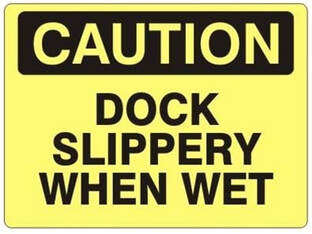
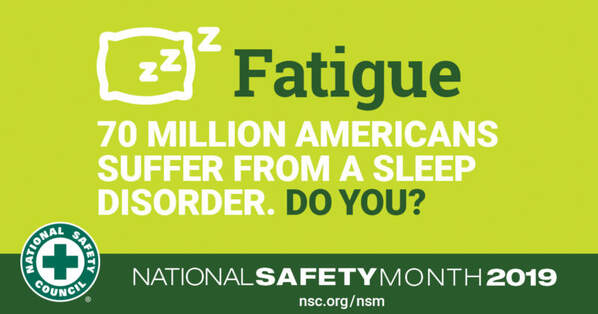
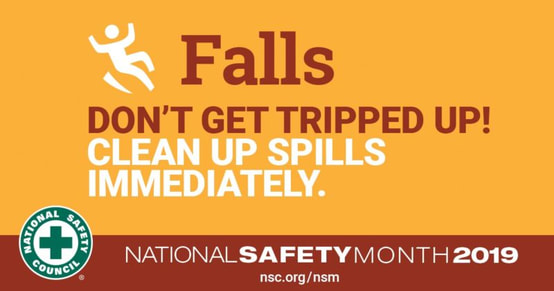
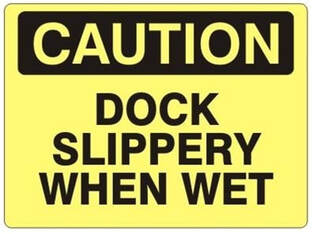
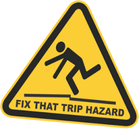
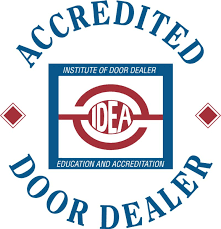
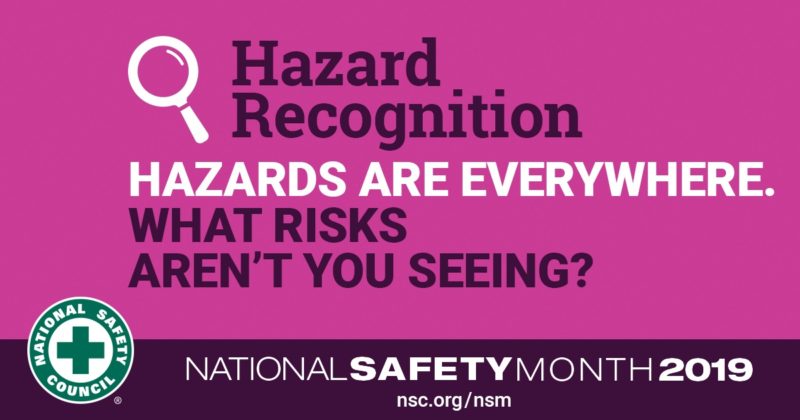
 RSS Feed
RSS Feed
